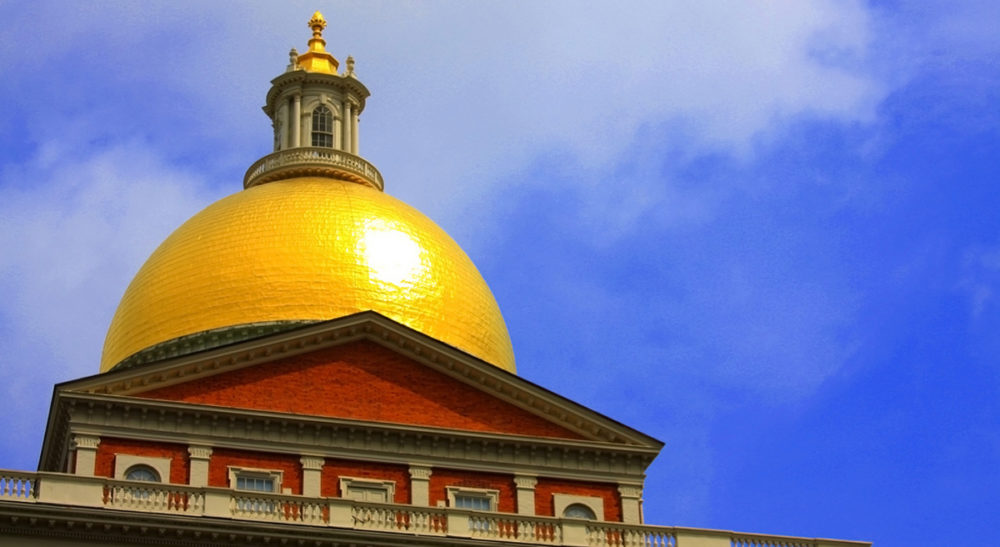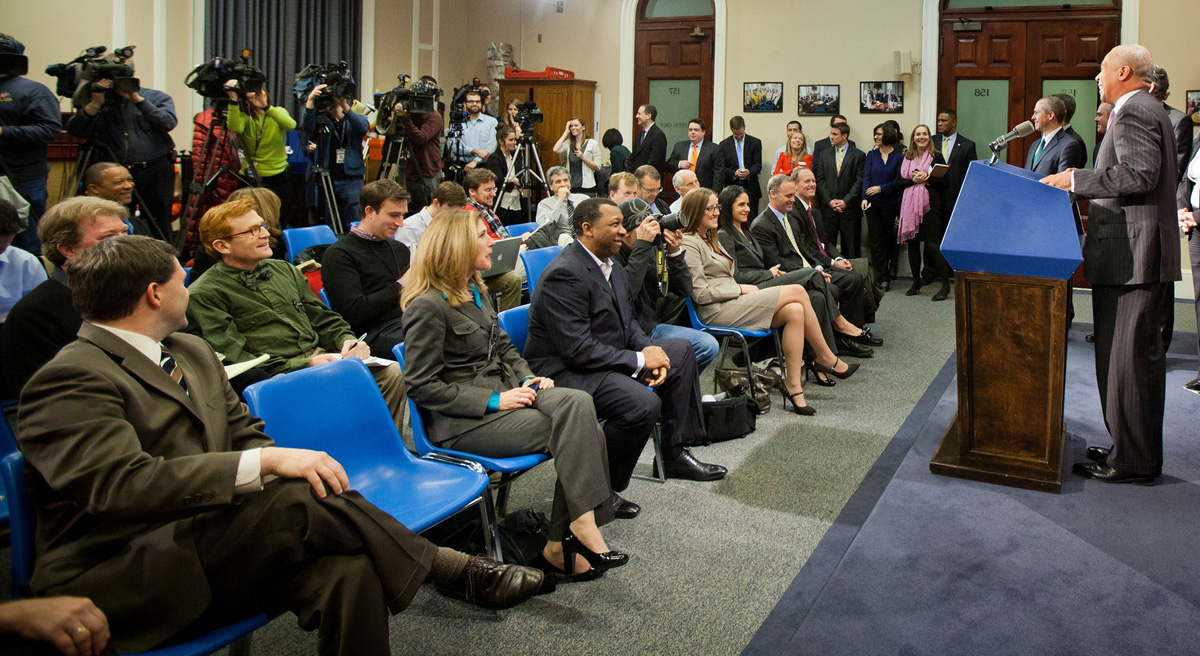Advertisement
The Mysterious Case Of The Vanishing Statehouse Reporters

Big wooden desks manufactured in the middle of the last century abut heavy metal desks — the kind with a slide-out, table-top drawer for a typewriter — in the Massachusetts State House press gallery. Twenty years ago, a newspaper assigning a reporter full time to the statehouse had to apply to the State House Press Association for permission to use one of those desks and the 1960s-vintage multi-line telephone that sat atop each one.
Today, almost all the desks are empty. Twenty years ago, 11 newspapers or newspaper chains — along with the Associated Press — assigned at least one full-time reporter to the statehouse. Now, there are reporters from only three (The Boston Globe, The Boston Herald, and the Springfield Republican) and the AP.
...why have so many newspapers, facing reduced resources, decided to cut statehouse coverage?
Of the eight states with full-time legislatures, Massachusetts has the fewest reporters assigned to the state house beat, according to a report issued last week by the Pew Research Center’s Journalism Project. Pew counts 15 full-time reporters, eight part-time reporters and nine college students, for a total of 32 journalists, covering the Massachusetts State House. California has 81, Michigan 63 and Ohio 62.
According to Matt Murphy, a reporter for the State House News Service (SHNS) who wrote about the Pew report, Springfield’s WLLP-TV and WGBH Radio are the only broadcast outlets to have a reporter at the state house.
“I was part-time at SHNS from 2006 to 2010, before taking the news editor job at the Dorchester Reporter, and the difference between the statehouse press room then and now is amazing,” wrote Gintautas Dumcius in an email. Dumcius is now a reporter for the State House News Service. He is one of the 15 full-time journalists based under the golden dome. “It feels so much emptier now,” he wrote.
One reason Massachusetts has so few full-time broadcast reporters assigned to the statehouse, though, is that Boston is not only the capital of Massachusetts, but the state’s media center — it’s a short drive from the studio to Beacon Hill. In that regard, Pew’s counting methods leave out several experienced and influential television reporters who cover state government pretty much full-time. They just don’t keep a desk at the statehouse: Jon Keller of WBZ-TV, Janet Wu of WCVB-TV and Allison King of NECN.

But why have so many newspapers, facing reduced resources, decided to cut statehouse coverage? It could be because Massachusetts has the State House News Service, a privately owned business that has been covering the statehouse for more than a century. The News Service has a staff of five experienced full-time journalists (and one part-timer). Editors around the state, as they faced newsroom cutbacks in the recession years, may have decided the News Service and the two-person Associated Press Statehouse bureau filled their needs for Beacon Hill coverage.
What do we lose when the local press isn't covering Beacon Hill? The stories that connect the dots between state government decisions and local communities. As good as the State House News Service is — and it is very good — it serves a statewide audience, not a local one.
Whether they come from non-profits, established news services or start-ups, we need more journalists -- more watchdogs -- on Beacon Hill.
Perhaps readers don’t care about state politics and the doings of candidates, the legislature and the governor. But full-time statehouse reporters don't just cover the legislature and the governor. By being based in the statehouse, they can cover all of state government — which, in Massachusetts, spends $36.5 billion a year of taxpayer money, employs close to 100,000 people, and touches nearly every aspect of its citizens’ daily lives.
In other states, as legacy media have abandoned statehouses, new organizations have sprung up to fill the void, according to Pew. Capital New York, a digital-only news outlet founded in 2010, has more full-time reporters in the statehouse in Albany than The New York Times or the Albany Times Union. The non-profit, digital-only Texas Tribune, founded at about the same time as Capital New York, has 15 full-time staffers covering the Texas State House.
These new organizations, to a greater or lesser extent, provide the same services the State House News Service has offered for decades. But you can never have enough journalists covering state government. Whether they come from non-profits, established news services or start-ups, we need more journalists — more watchdogs — on Beacon Hill.
Related:
